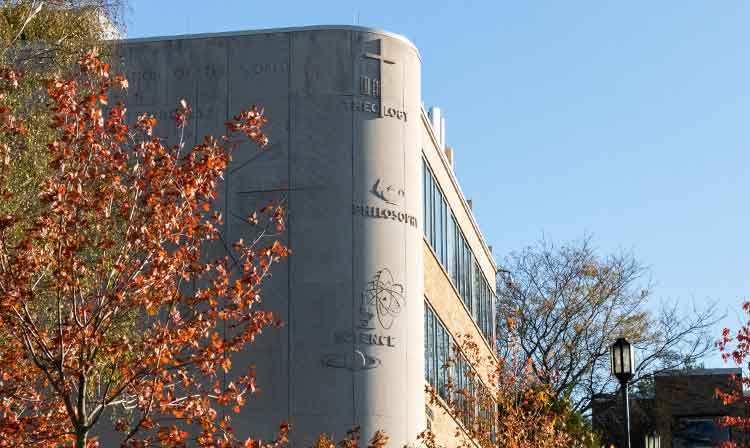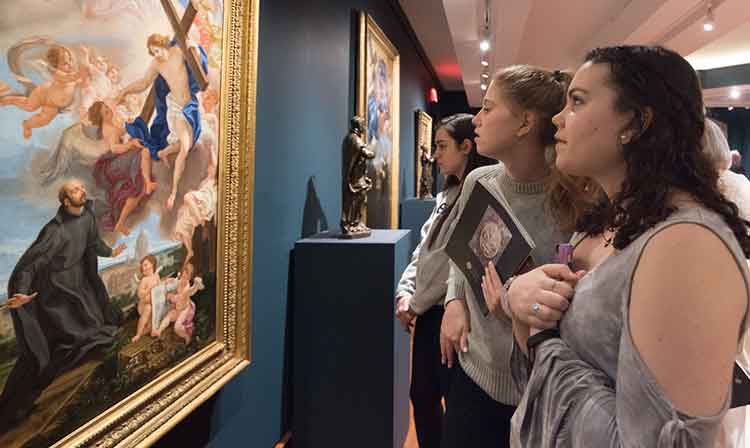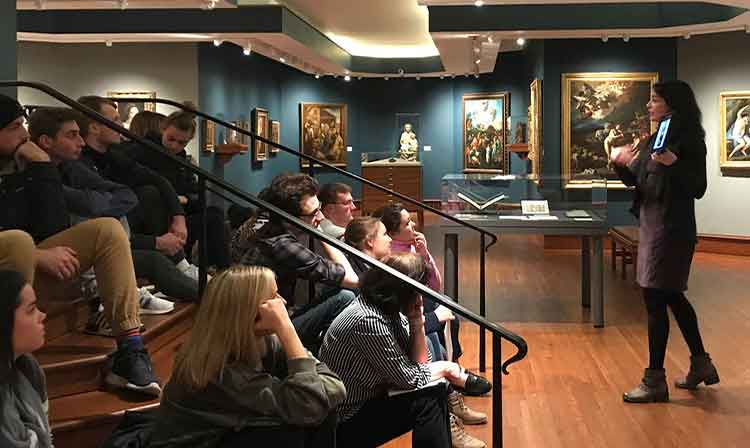Art History & Visual Culture
Degree
Bachelor of Arts, Major, Minor
School/College
John Charles Meditz College of Arts & Sciences
The arts contribute over $700 billion to the US economy and form a vital component of communities from small towns to large cities. Studying art history and visual culture develops the mind and vital skills—such as visual literacy, critical thinking, writing, and speaking—that prepare students to thrive in a wide spectrum of careers.
Find Out More
Course Requirements
Art History & Visual Culture Major
30 credits
Art History & Visual Culture Minor
18 credits
Contact Us
Undergraduate Admission
admis@fairfield.edu
(203) 254-4100




